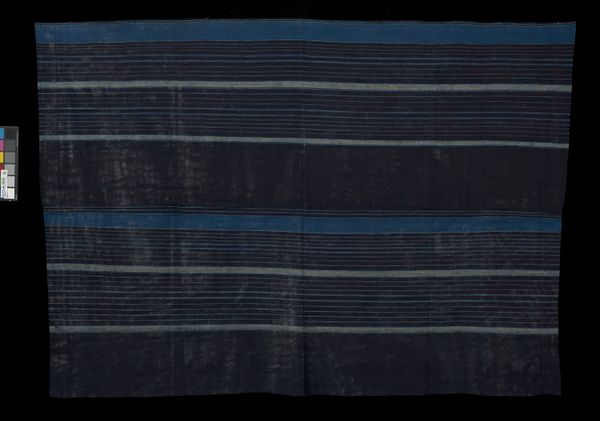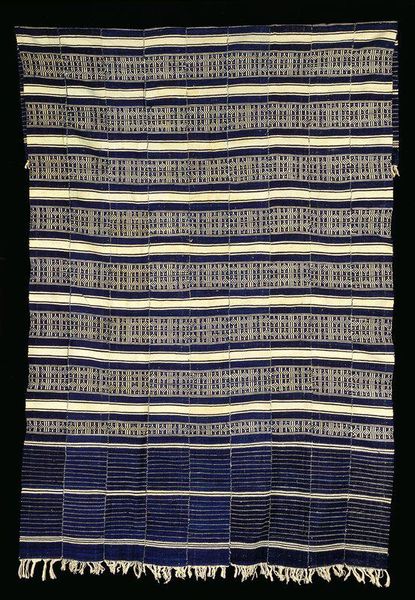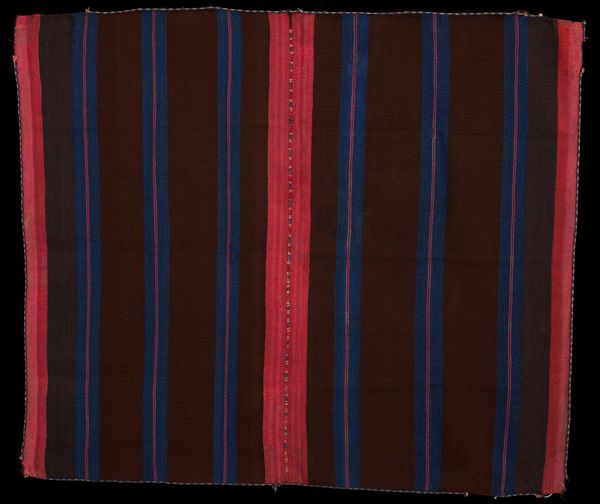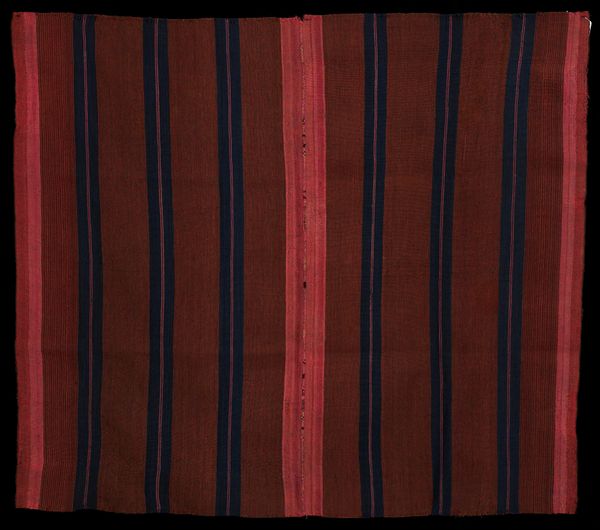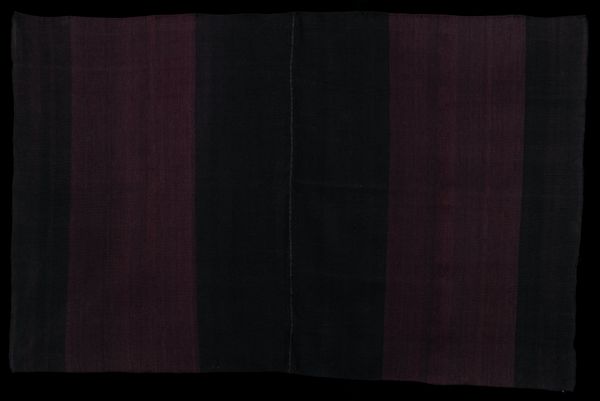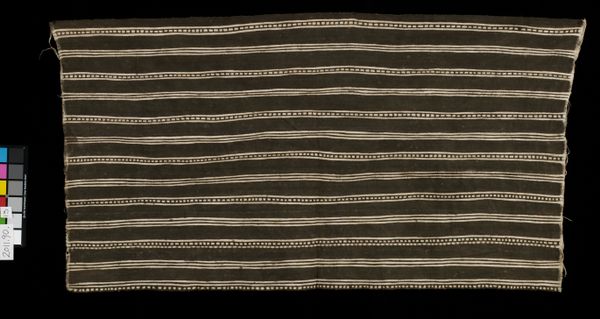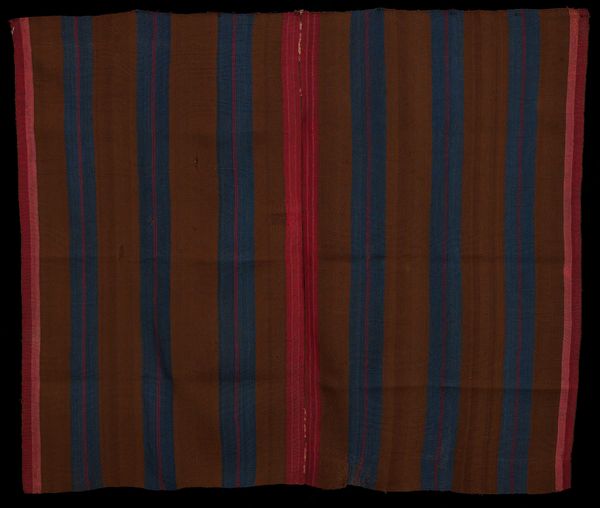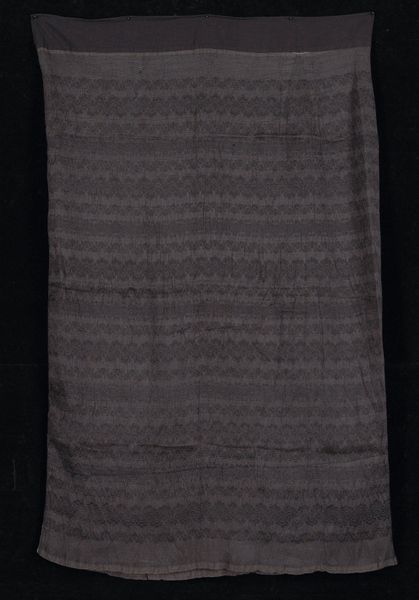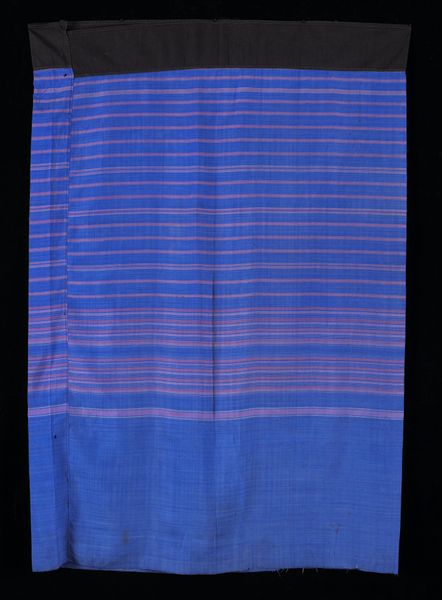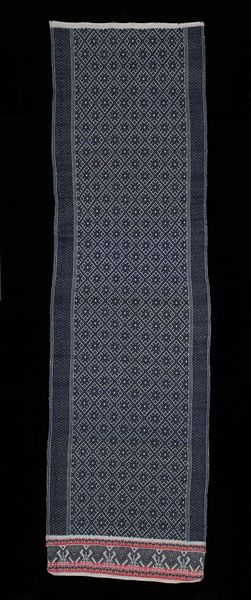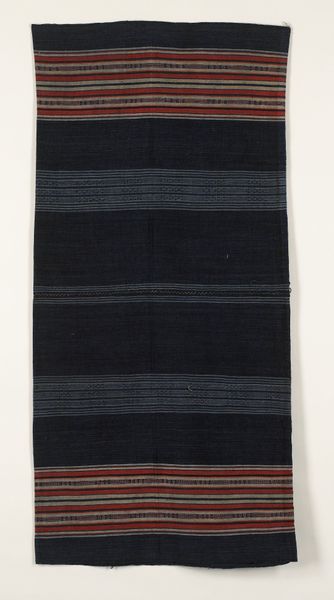
weaving, textile, cotton
#
african-art
#
weaving
#
textile
#
geometric
#
abstraction
#
cotton
#
textile design
#
yoruba-art
#
decorative-art
Dimensions: 73 3/4 × 49 1/2 in. (187.33 × 125.73 cm)
Copyright: No Known Copyright
Editor: Here we have a Yoruba "Wrapper" from around the 20th century, made with weaving and cotton. The indigo and white geometric patterns give it a very rhythmic quality, like looking at a woven score of music. What catches your eye about this piece? Curator: I immediately focus on the materiality of the wrapper, the labour invested in its production. Consider the processes: the growing and harvesting of cotton, the spinning of thread, the dyeing, potentially with locally sourced indigo. It's an intense network of skills. What can you tell me about the weave? Editor: Up close, you can see a pattern of dense indigo stripes alternating with stripes formed from a grid. The ends are different: they feature a design a bit like connected crosses. The overall impression is… deliberate. Curator: Precisely! Yoruba textiles aren't merely decorative; they’re deeply embedded in social and economic structures. We should explore who produced this, and for whom? Was this everyday wear, or was it meant for ritual use, trade or display of status? Considering its purpose and potential trade value opens exciting perspectives on its worth. Editor: I didn’t really consider its utility as important – I was mainly captivated by the color and how intricate it seems! Do you think it might have been difficult to make this design with the traditional weaving process? Curator: Absolutely. Think about the constraints of the loom, the skill required to maintain the geometric precision while also varying the pattern elements at the edges. Even these simple grids demand advanced calculation, as well as advanced physical coordination. By seeing the intensive labour we start to value this craft in a new light. Editor: I never considered weaving as calculation – it makes me appreciate the effort so much more! Now, seeing the grid structure I understand more profoundly how textiles can be seen as matrices of human ingenuity. Curator: Exactly, and by focusing on these material and productive aspects, we acknowledge the rich histories embedded in what might seem like a simple cloth.
Comments
No comments
Be the first to comment and join the conversation on the ultimate creative platform.
